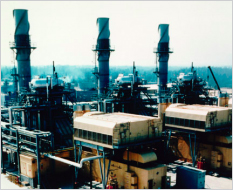Aeroderivative Turbines - LM and TM Package Operations/ Familiarization Training: O-AER10301 - LM6000 Aero Package Operation/Familiarization
Schedule
Course Description
O-AER10301

|
Course Description |
This course is designed to cover topics from Basic Gas turbine theory to detailed turbine operation to ensure consistent, trouble-free performance from the engine and its associated equipment. This course develops a background in gas turbine operation that enables participants to analyze operating problems properly and take the necessary corrective action. We emphasize the operator's responsibilities with regards to auxiliary systems, operational data taking and evaluation. Operators are instructed in how to interpret fault annunciation and how to determine if the annunciated fault can be remedied by operator action or by the assistance of instrumentation and/or maintenance personnel. The course focuses on package familiarization, starting, and loading and specific operator checks of the various turbine support and auxiliary systems to ensure safe and reliable operation of the gas turbine.
|
|
Duration |
5 Days
|
|
Target Audience Delete those items not valid for this outline |
|
|
Prerequisites |
None
|
|
Class Size |
Maximum number of students: 15
|
|
Learning Objectives |
This course will provide basic knowledge on the following:
|
|
Course Content |
Introduction
Lesson 1 – Gas turbine Basics
Lesson 2 – LM6000 Construction
Lesson 3 – Gas Tubine Support Systems
Lesson 4 – Electrical Systems
Lesson 5 - Generator
Lesson 6 – Control System
Lesson 7 - Operation
|
|
|
|